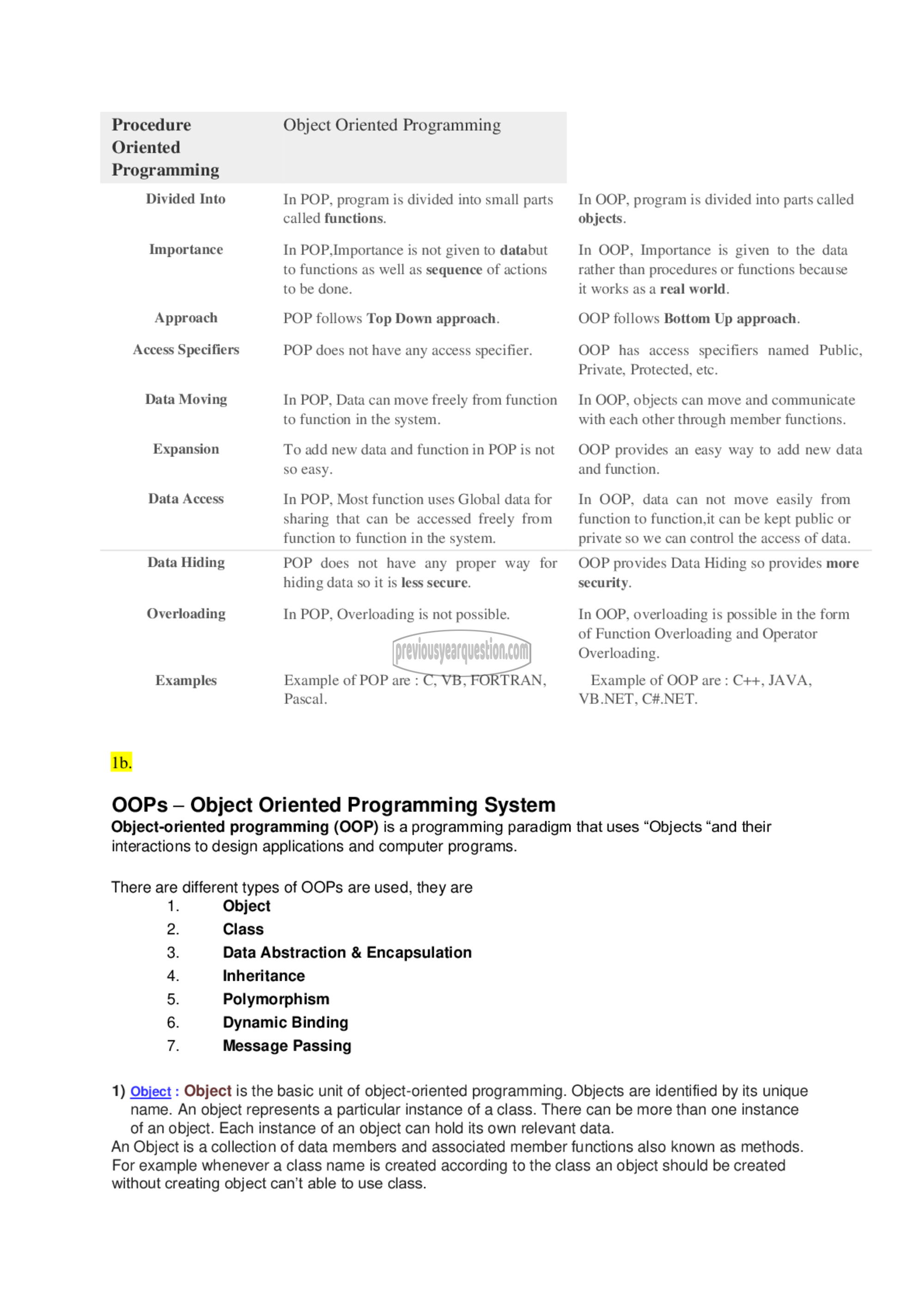APJ ABDUL KALAM TECHNOLOGICAL UNIVERSITY Previous Years Question Paper & Answer
Semester : SEMESTER 6
Subject : Object Oriented Programming
Year : 2018
Term : MARCH
Scheme : 2015 Full Time
Course Code : EC 312
Page:2
Procedure
Oriented
Programming
Divided Into
Importance
Approach
Access Specifiers
Data Moving
Expansion
Data Access
Data Hiding
Overloading
Examples
Object Oriented Programming
In POP, program is divided into small parts
called functions.
In POP, Importance is not given to databut
to functions as well as sequence of actions
to be done.
POP follows Top Down approach.
POP does not have any access specifier.
In POP, Data can move freely from function
to function in the system.
To add new data and function in POP is not
so easy.
In POP, Most function uses Global data for
sharing that can be accessed freely from
function to function in the system.
POP does not have any proper way for
hiding data so it is less secure.
In POP, Overloading is not possible.
Example of POP are : C, VB, FORTRAN,
Pascal.
OOPs - Object Oriented Programming System
Object-oriented programming (OOP) is a programming paradigm that uses “Objects “and their
interactions to design applications and computer programs.
There are different types of OOPs are used, they are
1. Object
Class
Data Abstraction & Encapsulation
Inheritance
Polymorphism
Dynamic Binding
Message Passing
74 9 छ > ४० ७
In OOP, program is divided into parts called
objects.
In OOP, Importance is given to the data
rather than procedures or functions because
it works as a real world.
OOP follows Bottom Up approach.
OOP has access specifiers named Public,
Private, Protected, etc.
In OOP, objects can move and communicate
with each other through member functions.
OOP provides an easy way to add new data
and function.
In OOP, data can not move easily from
function to function, it can be kept public or
private so we can control the access of data.
OOP provides Data Hiding so provides more
security.
In OOP, overloading is possible in the form
of Function Overloading and Operator
Overloading.
Example of OOP are : C++, JAVA,
VB.NET, C#.NET.
1) Object : Object is the basic unit of object-oriented programming. Objects are identified by its unique
name. An object represents a particular instance of a class. There can be more than one instance
of an object. Each instance of an object can hold its own relevant data.
An Object is a collection of data members and associated member functions also known as methods.
For example whenever a class name is created according to the class an object should be created
without creating object can’t able to use class.
